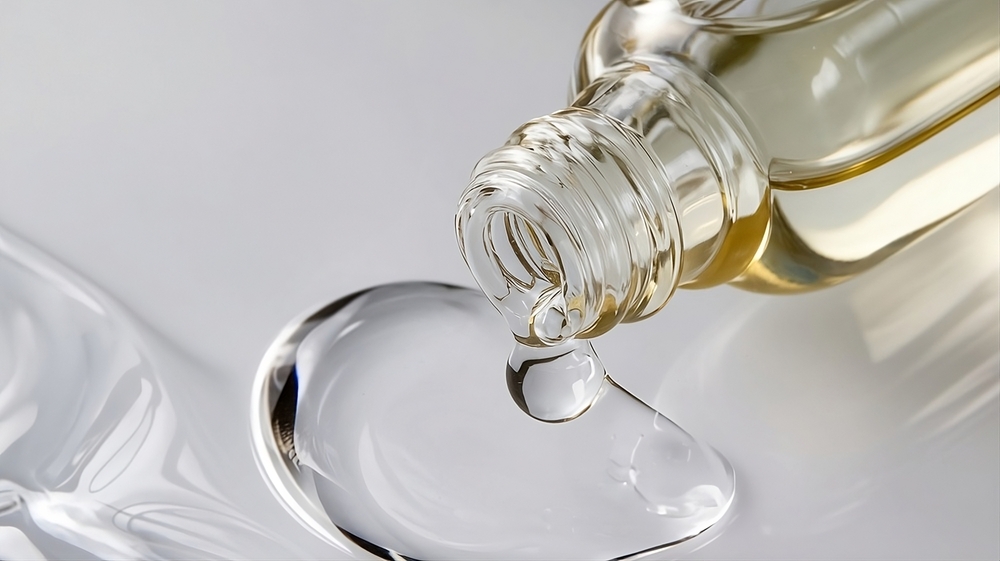Polydeoxyribonucleotide (PDRN): The New Face in Aesthetics
Polydeoxyribonucleotide (PDRN) is a DNA derived biopolymer with regenerative, anti-inflammatory and tissue repairing properties. Extracted primarily from the sperm of salmon species, PDRN is fast becoming the new darling of aesthetic and regenerative medicine. This molecule has been widely used in South Korea and has received accolades in the aesthetic marketplace. However, in The United States, PDRN is not well known. This article will provide an overview of the biologic function, aesthetic benefits and safety concerns as well as evidence supporting the clinical efficacy of PDRN.
Polydeoxyribonucleotide is a low molecular weight DNA fragment composed of deoxyribonucleotides derived from fish sperm. Commonly used species are rainbow trout (Oncorhynchus mykiss) or chum salmon (Oncorhynchus keta). It is classified as a biologic and considered a DNA based compound. PDRN can promote tissue repair, regeneration and angiogenesis.
PDRN is a mixture of DNA fragments that function together to stimulate the A2A adenosine receptor, modulating inflammation, promoting cell proliferation and supporting tissue repair pathways of DNA synthesis.
Mechanism of Action
Polydeoxyribonucleotide is not present in the human body. It mimics endogenous nucleotides and participates in tissue repair through several biologic pathways.
Activation of Adenosine A2A Receptors
This pathway results in anti-inflammatory signaling reducing inflammatory cytokines such as TNF-alpha and IL-6. A2A receptors are a type of adenosine receptor that plays a significant role in the regulation of immune function, inflammation, and neurological function.
DNA Salvage Pathway
PDRN provides needed nucleotides in the formation of DNA synthesis. This is critical in rapidly regenerative tissue. It augments the action of the fibroblasts and keratinocytes.
Stimulation of Fibroblast Growth and Collagen Production
Enhances the integrity of the extracellular matrix and improved dermal elasticity.
Angiogenesis
PDRN supports the formation of new vasculature in regenerating tissues.
Sources and Extraction
PDRN is harvested from the sperm of fish especially salmon due to their DNA similarity to humans and extremely low immunogenicity. The DNA is purified through a process of enzymatic hydrolysis and heat processing. This ensures the removal of specific proteins and immunogenic components. The salmon sperm DNA is the preferred choice due to its safety, scalability and high nucleotide yield. Salmon sperm and the processing makes it useful for medical and cosmetic applications.
Despite PDRN being derived from salmon sperm, it does not contain proteins responsible for fish allergies. The common culprit responsible for fish allergies is parvalbumin. Purification removes immunogenic proteins making it generally safe for individuals with fish allergies. However, in highly atopic or allergic patients, supervision is always advised.
Aesthetic Medicine and PDRN
Skin Rejuvenation
Topicals and injectable applications improve dermal thickness.
Topicals and injectable applications reduce fine lines and wrinkles.
Overall, applications brighten skin and improve texture.
Studies have proven enhanced collagen production and increased skin hydration.
PDRN can and is often combined with hyaluronic acid, growth factors, exosomes, platelet rich plasma and peptides to augment tissue regeneration. This is particularly noted in regenerative facial treatments and injectables.
Advantages in Aesthetic Use
- Non-immunogenic and safe for repeated usage.
- Anti-inflammatory and beneficial in acne and rosacea prone skin.
- Tissue regeneration promoting the synthesis of collagen and elastin.
- Post procedure recovery is enhanced, reducing downtime and augmenting results.
- Clinically proven visible improvement in wrinkles and skin elasticity especially in the periorbital area after a series of treatments.
Side Effects
Significant side effects are rare.
Mild transient erythema or swelling at the injection site.
Allergic reactions are extremely rare due to the high purification process and standards.
In wound healing, deoxyribonucleotide has been studied and proven to promote wound healing by promoting angiogenesis and epithelial regeneration. It is especially useful in post laser or micro needling recovery. PDRN reduces scar formation when utilized post treatment.
PDRN is clinically proven, safe, and effective agent for tissue regeneration and aesthetic applications. It is firmly solidified as a staple in Korean skincare and global aesthetic medicine due to the multifaceted roles in wound healing, anti-inflammation and dermal rejuvenation.
Clinical Studies on PDRN
PDRN prevents SIRT1 Degradation by Attenuating Autophagy During Skin Aging
PLoS One 2025 May 9;20(5):e0321005 PMID 40343916
Skin aging is a complex process influenced by many factors, such as ultraviolet radiation from the sun and oxidative damage. In this study, we utilized UVB induced photoaging or H2O2 induced oxidative stress models to explore the effects of PDRN on anti-aging. The findings revealed that keratinocytes exhibited significantly reduced cell proliferation and increased cell apoptosis when exposed to UVB or H2O2. Findings indicated that PDRN protects cells from UVB and H2O2 damage. We hypothesized that PDRN promotes cell proliferation by modulating the expression of key genes.
Silent information regulator 1 (SIRT1) plays an essential role in antioxidant, anti-apoptotic and senescence process. In this study, PDRN significantly upregulated SIRT1 expression at protein levels and attenuates stress granules in the cytoplasm, particularly under UVB and H2O2 stimulation, implying PDRN decreases skin aging by promoting the expression of SIRT1.
Human skin aging is characterized by thinning, fragility and hyperpigmentation. In order to verify the anti-aging effect of PDRN on the human skin, we administered UVB radiation to mice to stimulate the characteristics of human skin aging. H&E results showed that UVB radiation induced skin atrophy, thinning of the epidermal layer and cellular reduction in the skin of mice but the aging skin could be restored to the same level as that of controls after treatment with PDRN. This implies that PDRN can greatly alleviate the skin photodegradation induced by UVB.
Conclusion: This study demonstrates that PDRN effectively inhibits the aging of keratinocytes by upregulating Silent Information Regulator 1 (SIRT1) expression and reducing nuclear autophagy when exposed to UVB or H2O2 induced senescence. These findings reveal the cellular anti-aging properties of PDRN and provide insights into the mechanism underlying its potential as a natural ingredient in skincare products.
Polydeoxyribonucleotide: A Promising Biological Platform to Accelerate Impaired Skin Wound Healing
Pharmaceuticals 2021 Oct 29;14(11):1103 PMID 34832885
This study investigated the use of PDRN in wound healing.
Conclusion: Regarding safety, acute and chronic toxicity studies in mice were undertaken to evaluate the repeated systemic administration of PDRN which showed no toxic effect in the brain, liver, lungs, skeletal muscle and heart and did not cause mortality. In this clinical study on the effects of PDRN on the healing of chronic diabetic wounds, safety and tolerability were excellent.
The combination with bioactive materials including hydrogels, scaffolds, nanofibers and films enhance the pharmacological activity of PDRN and offer important advantages in wound healing and tissue engineering.
The Effectiveness of Polynucleotides in Aesthetic Medicine: A Systematic Review
J Cosmet Dermatol 2025 Feb;24(2):e16721 PMID 39645667
Background: Polynucleotides, popular in bio revitalization, show promise in the current sphere of aesthetic medicine due to their regenerative properties, previously used in wound healing. The aim of this review was to synthesize the existing literature, focusing on the effectiveness of PDRN in aesthetic medicine, which is concentrated on skin rejuvenation by providing patients with multiple benefits and the least side effects.
Conclusion: Polynucleotide injections have shown promising outcomes in reducing wrinkles, improving skin texture and enhancing elasticity with statistically significant results in several studies. While side effects are generally mild and transient, patient satisfaction is moderate to high suggesting PDRN treatment is well tolerated and effective cosmetic intervention.
Juventix Regenerative Medical: Advanced PDRN Delivery
Juventix Regenerative Medical is an industry leader in the regenerative medical field. Juventix is now proud to offer the LuxsQueen core serum line of products. These encompass anti-aging, acne and skin brightening lines of products. Polydeoxyribonucleotide is included in these serums.
Juventix Regenerative Medical has devices that will deliver these serums into the skin without the use of needles. The Apollo Duet device utilizing a combination of electroporation and iontophoresis to drive products to lower skin surfaces. Privive serum which can be combined with exosomes, platelet rich plasma and other biologics to chemically absorb into the lower skin layers and to speed recovery post procedure.
Juventix Regenerative Medical has answered the need for pain free, needle free delivery options for use by all members of the med spa community. When combined with LuxsQueen serums, exosomes, peptides or platelet rich plasma, excellent results are obtained leading to greater outcomes with enhanced patient satisfaction.
RESTORE, REVIVE, REGENERATE – JUVENTIX REGENERATIVE MEDICAL
Regenerative Regards,
Dr. Robert McGrath








